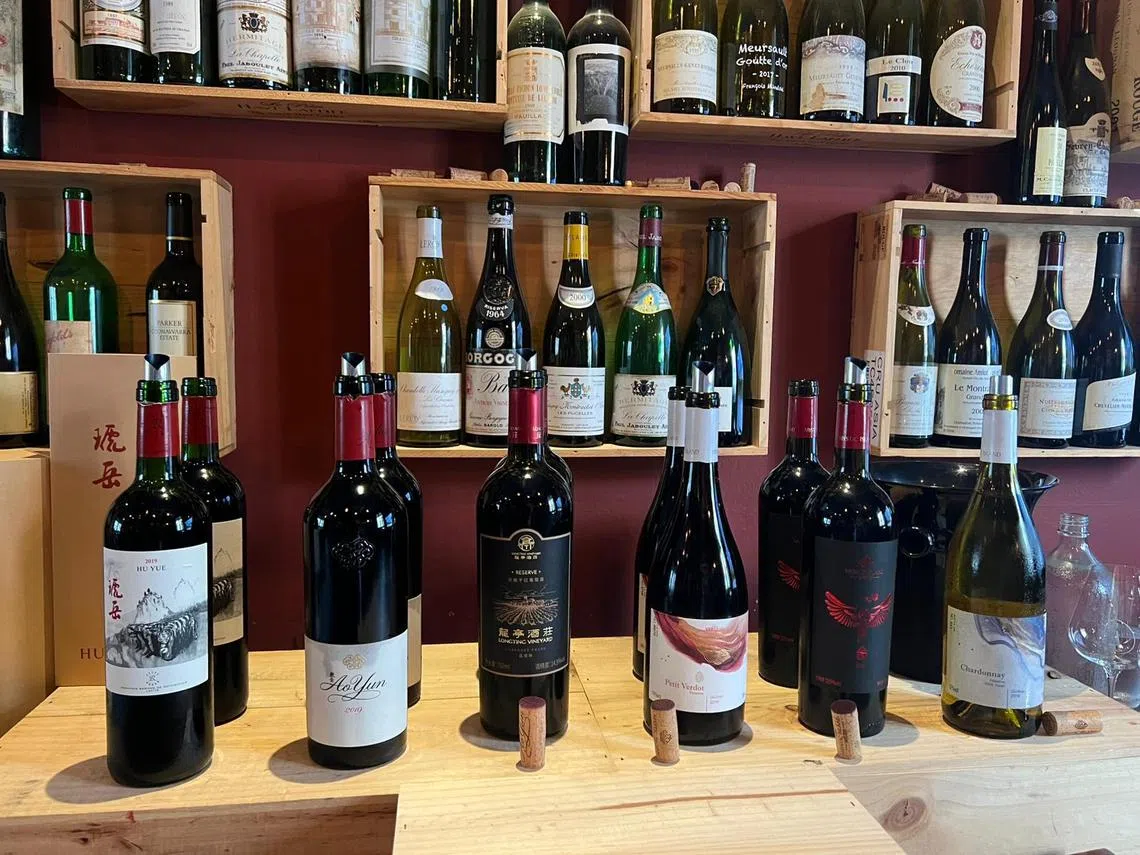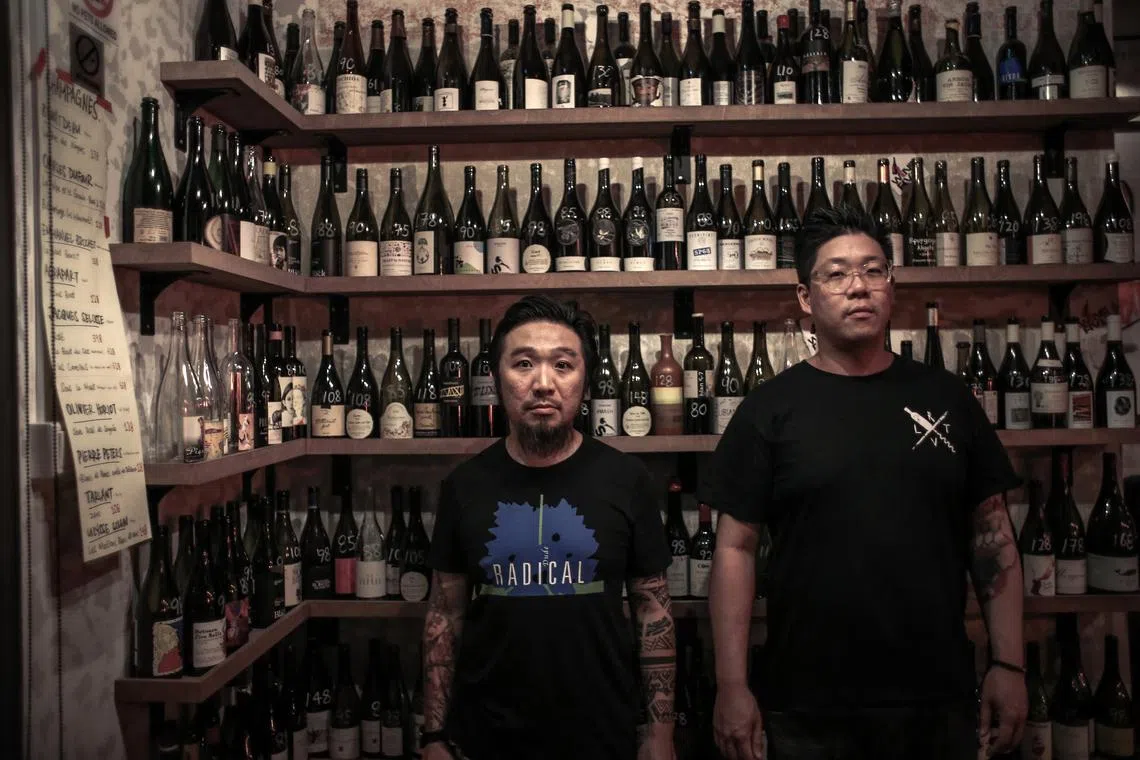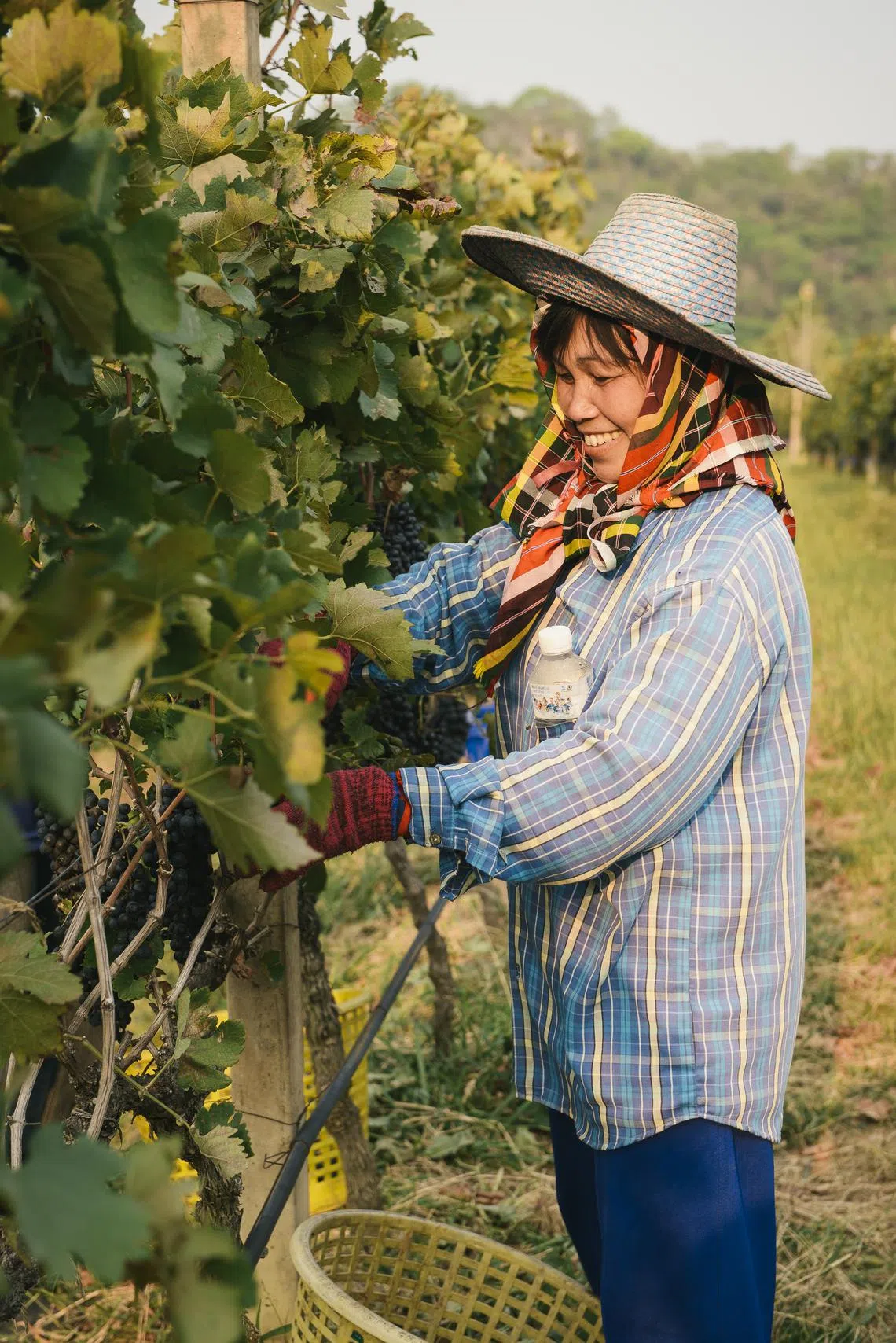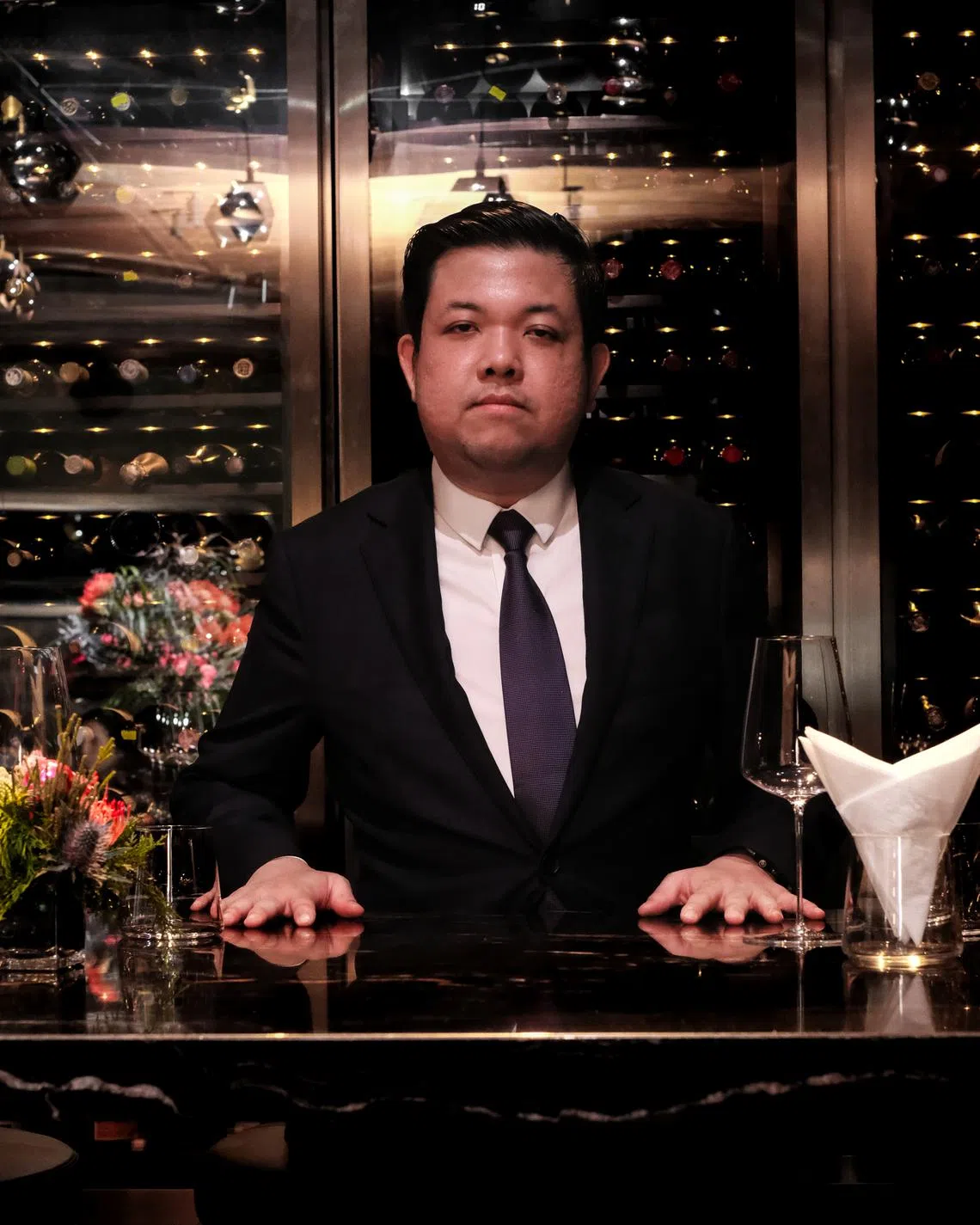The rise of Asian wines: A new era in viticulture?
Changing tastes among Asian palates is fuelling interest in wines from Japan, China, Thailand and India
OVER the last few years, the wine world has witnessed a curious transformation. No longer confined to the traditional vineyards of the Old or New World, the epicentre of oenological innovation is shifting eastwards. Asian wines are not just knocking on the door of the global market; they’re bursting through with a vigour that demands enthusiasts’ attention.
“I have a lot of wine collectors and Burgundy drinkers who are starting to look at wines from Hokkaido, Japan. What’s hot in the market right now? Domaine Takahiko’s ‘Nana-Tsu-Mori’ Pinot Noir and Domaine Yui,” asserts Gary Low, founder of five-month-old Vitis Wine Bar and Bistro in Duo Galleria, which touts itself as the world’s first wine bar devoted exclusively to Asian wines and winemakers.

Vitis boasts 1,000 bottles in its collection, including the Long Dai Cabernet Blend 2019 – known as The China Lafite – and Fratelli Vitae Chardonnay 2016 from India.
In Singapore, a handful of players offer Asian wines. Retailers such as Enoteca represent the Japanese-owned wineries Maison Lou Dumont from Burgundy and Kimura Cellar from New Zealand, wholesaler Epicurean Nomads imports Grace Wines from Shanxi and other Japanese labels, while Stellez Vine distributes Thailand’s GranMonte.
Meanwhile, gourmands will find Asian wines on the menus at the likes of Esora, Jaan, Nae:um, Nouri, Odette, Park90, Praelum, Seroja, Unyangkordai, Wakuda and 67 Pall Mall.
Several factors are driving the growth. For example, Asian consumers have developed a thirst for the rare and the novel. Heavy investment in overseas marketing, especially among Chinese producers, have raised awareness and visibility.
Chinese, Japanese and Thai wines have also been sweeping up awards at international competitions, which have also raised their profile, altering the perception that Asian wines are inferior to their global counterparts. The ability of Asian wines to match perfectly with Asian cuisines should not be underestimated either.
Angel Liu, a senior trade sales executive at wholesaler and importer Wine Portal, says that consumers have become more adventurous and willing to explore wines beyond traditional regions such as Europe.
“Asian wines often have distinct characteristics due to grape varietals, terroir and winemaking styles, offering exciting new tasting profiles for consumers,” she ventures.

In recent years, wineries such as Chateau Changyu Castel from Shandong, China, and Lumiere from Yamanashi, Japan, have been receiving accolades from the Decanter World Wine Awards. Thailand’s GranMonte The Orient Viognier 2022 scooped up the Best Wine from Asia 2024 at the Hong Kong International Wine and Spirit Competition.

“The perception among regular wine drinkers has been that the quality (of Asian wines) has definitely risen through the years,” says Alvin Gho, co-founder of wine bar RVLT and Raw Wine, an importer/distributor. “There are some Asian wines starting to gain cult status. Think of Napa 20 or 30 years ago.”
Given that Asian wines hail from similar geographic and climatic conditions as Asian agricultural produce, wine-pairing exercises become less onerous. With many Asian countries boasting a sophisticated culinary culture, this is an important consideration.

For example, Japanese wines tend to be more restrained, allowing them to complement the delicate dining genres such as kaiseki, sushi and tempura, says Takayuki Kaneko, corporate account manager of Epicurean Nomads.
He explains: “At times, having wine with seafood may inadvertently result in an overly fishy or unpleasant aroma. This is not due to the smell of the seafood itself. (Japanese wine made from grapes such as) Koshu and Muscat Bailey A, indigenous to Japan, contain less iron and therefore the fishiness is averted.”
A true taste of Asia
The rise of Asian wines isn’t just about replicating Western styles. It’s about creating something uniquely Asian. Winemakers are experimenting with indigenous grape varieties and traditional winemaking techniques, resulting in wines that offer a true taste of Asia. These distinctive, terroir-driven wines are turning heads and challenging preconceptions.

China, the behemoth of the Asian wine market, is leading the charge. Once known primarily for its mass-produced wines, it is now home to world-class vineyards producing wines that rival the best from Bordeaux and Napa. The Ningxia region is renowned for its robust red wines, while Xinjiang produces a range of elegant varietals, including Syrah and Chardonnay.
Over in Japan, wines made from the indigenous Koshu grape are celebrated for their ability to express terroir and adapt to local climates, giving rise to a unique flavour profile. India is considered an emerging market with potential; regions such as the Sandhan Valley in Maharashtra produce quality wines, primarily for domestic consumption.

“Asian wines are grown in difficult climates and growing conditions that give wines a very distinct flavour or structural character,” explains Gerald Lu, director of Praelum Wine Bistro, who counts “around 20 to 30” labels of Asian wine – most of them Chinese – in the bistro’s 400-label list. “The good quality ones display very strong grape varietal typicity, yet encompass the regional terroir and climate.”
He adds: “A Japanese pinot noir (has strong notes of) cranberries and is floral with a high acidity. A Chinese cabernet sauvignon is very black fruit-forward with strong bell pepper notes and firm tannins, but is a little dialled down at the end (due to higher rainfall in China). A Thai Syrah is (characterised by) juicy fruit and strong spices.”
Roadblocks remain
Despite the proliferation of Asian wines and winemakers in the market, the path to global recognition is not without its challenges.
Japanese wines tend to be higher priced due to their rarity and the prestige associated with the “Made in Japan” label. However, there is still inconsistency in quality across different producers, leading to the perception that Japanese wines are still evolving, and cannot yet match the reliability found in more established regions.
Then there is the stigma associated with wines made in India, which stem from broader stereotypes about Indian manufacturing and agricultural practices. Indian consumers themselves tend to display cultural bias, preferring imported wines over domestic options, driven by a perception that foreign products are inherently superior.

“People think that Asian wine is cheap and of lower quality as compared to the regions they are used to,” says Vitis’ Low. “The only advice I can give is that you just need to try the wine… and taste it with an open mind.”
Gerard Zhang, manager of Stellez Vine, offers: “Asian wineries do not have a long history. Most are family-owned, or run by social enterprises. Funds are a constant issue. They rely on sommeliers and distributors to market their products. But for distributors, their main goal is to generate profits, so they will only push products that generate good revenue. It is not surprising that Asian wines can be left behind.”
The Asian century
For now, it appears that Asian wines are on an upward trajectory, driven by continued investment in viticulture, innovative winemaking practices and increased consumer interest. For wine lovers, this is an exciting time. The world of wine is expanding, offering new tastes, new stories and new experiences.

Asked what excites him about the industry, and Vitis’ Low points to the potential of Korean and Laotian wines. He’s looking into producers of Korean wines made entirely from grapes, as opposed to those made from a combination of grapes and mulberries. “I think that’s interesting, given the infatuation Singapore has with Korea,” he says.

That said, challenges remain for Asian winemakers as they compete with established wine regions globally. “Building awareness, educating consumers, and maintaining consistent quality are critical for their continued success,” maintains Nicholas Huang, Enoteca’s key account manager.
“As the category grows, it is essential to focus on developing each region’s unique identity and strengths, rather than following fleeting trends or prioritising commercial appeal over authenticity,” he adds.
The message is clear: ignore Asian wines at your peril. The future of wine is here, and it’s speaking with an Asian accent – complex, nuanced and undeniably compelling.
Decoding Asia newsletter: your guide to navigating Asia in a new global order. Sign up here to get Decoding Asia newsletter. Delivered to your inbox. Free.
Copyright SPH Media. All rights reserved.










